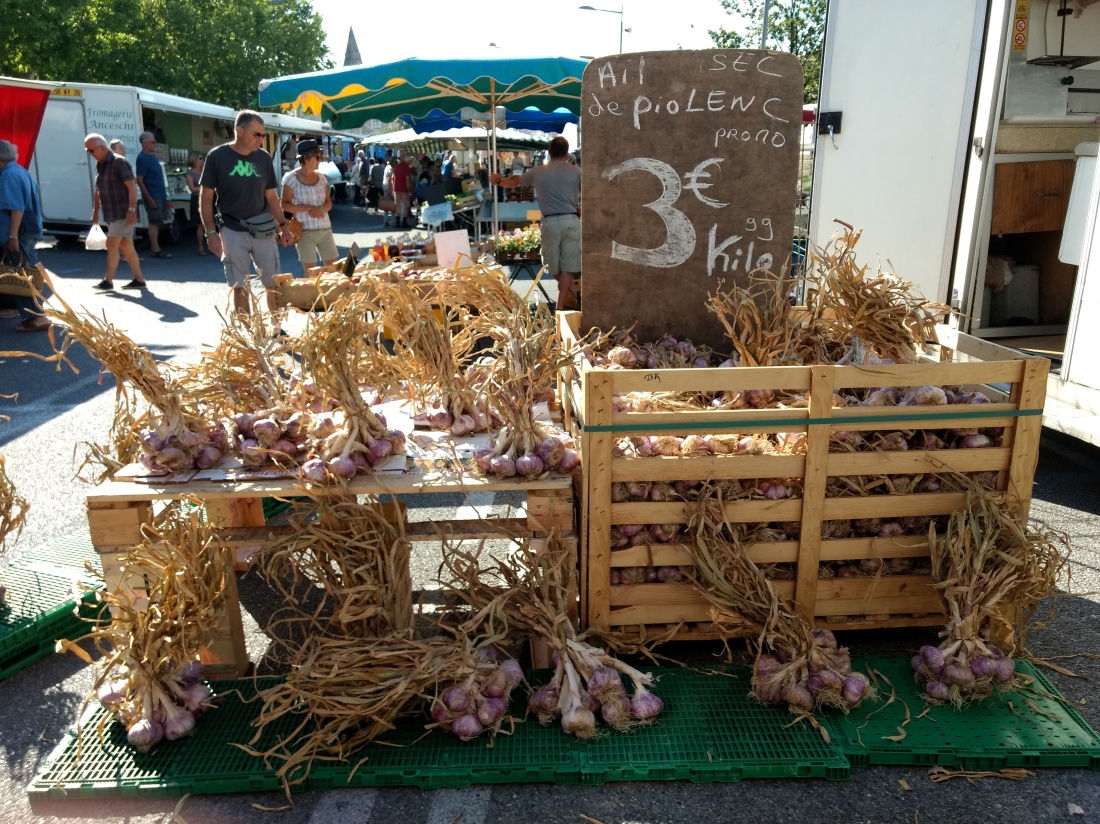The Capital of Garlic say the road signs as you approach the town of Piolenc in Provençale Vaucluse, where 2000 tons of Allium sativum are grown each year. On the feast of St John, close to mid-summer day, the town celebrates the ‘Stinking Rose’ with music, a parade, and countless stalls selling garlic in many forms. At the same time, on the western bank of the Rhône, another garlic festival is held in the beautiful arcaded market square of Uzès in Gard when garlic growers from all over the south of France arrive to sell their freshly-harvested crop.
Garlic growers owe their present-day success to an accidental discovery three hundred years ago by Olivier de Serres. The author of Le Théâtre d’agriculture et mesnages des champs (1600), is known as the father of French agriculture and was born and lived on a large estate in Villeneuve-de-Berg in the Ardèche.
By chance, de Serres established the fact that each clove of one year’s garlic should be planted no later than October to ensure large heads of garlic containing separate cloves in the following summer. When garlic cloves are planted too late in the autumn, the garlic will grow but in the form of an onion instead of a bulb of closely packed cloves.
Garlic prefers to grow in dry, sandy soil that is not recently improved with manure or rotted compost. Like many ancient plants of the Midi, the allium benefits from growing as naturally as possible. I prefer the violet-skinned garlic variety widely available in the south of France because it keeps well throughout the winter.
Yet, garlic is a surprisingly tolerant plant to grow. While Britain’s principal garlic producer farms in the moderate climate of the Isle of Wight, a friend in the north of England with more harsh winters also grows garlic successfully on her nearby allotment. In September, she plants the separate cloves of the white-skinned Spanish garlic she buys in her local supermarket and protects it with a cloche or upturned wooden box in periods of sustained rain.
In my local market in the Ardèche, some garlic is sold with the stems attractively plaited for display in the kitchen. But it’s cheaper to buy the bulbs with the dry, papery stems just gathered together into a bunch. This is fine for me since I trim off the surplus leaves and hang the bunch itself on a hook in a cool, dry corner of my garage in Oxford, cutting off a bulb at a time for use in the kitchen.
The remarkable anti-bacterial and antifungal qualities of sulphur-rich garlic are also utilised by French gardeners. Not only is garlic a useful companion plant – try growing a few cloves among rose bushes or in pots of summer flowers – but a garlic-rich liquid is sold in containers by my local farm shop in Saint Montan as a plant spray for organic growers to help counteract maladies and plant diseases. The instructions recommend dilution with rain-water and a few drops of liquid soap to help the decoction adhere to leaves and stems. I shall try this in my garden next spring when the aphids and other pests arrive.
But a cheaper equivalent can be made at home. This recipe for a garlic-laced anti-bug spray comes from a friend in Connecticut.
Finely chop 2 fat, peeled cloves of garlic then place in a bowl and add 500 ml of warm water. Stir, then cover and leave until the liquid is cold.
Pour 2 teaspoons of vegetable oil into a 500 ml plastic spray bottle and add a couple of squirts of liquid soap or washing-up detergent.
Strain the liquid from the garlic mixture and pour into the spray bottle. Screw on the top of the bottle and add a label then store the spray in a cool place and use within 2 months for dealing with aphids on roses and leave-munching bugs on other plants.


Love garlic, and these are so large and looks so good.
LikeLike